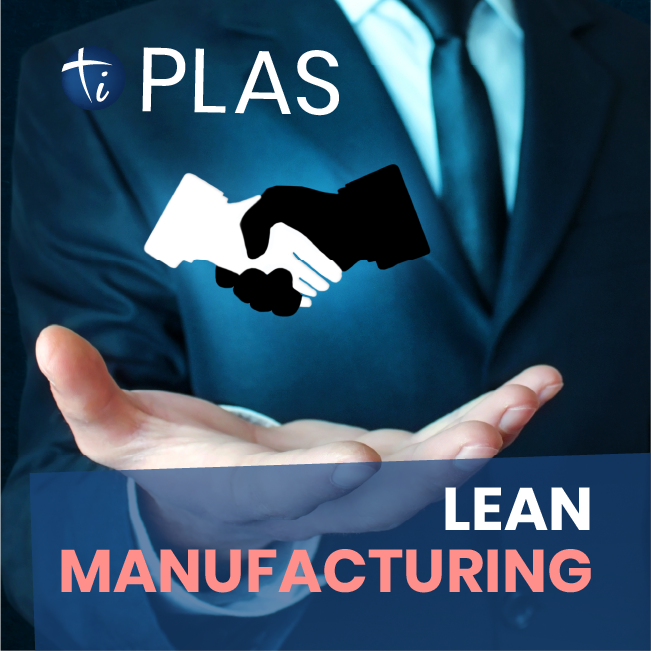The question of what Lean Manufacturing is proves very tricky, and anyone who claims to have a clear and comprehensive definition of it, is, well economical with the truth. Why is that? Because Lean Manufacturing is more than a set of methods for business management. Today, “lean management” is a philosophy and a way of thinking that aims to simplify processes and reduce waste, not only to generate savings, but first and foremost to improve the quality of work and increase the level of satisfaction of employees.
A Brief History of Lean Manufacturing
Lean Manufacturing is derived from the Toyota Production System, which has been developed in the course of over 40 years by Taiichi Ohno, Shigeo Shingo. It started with an effort to shorten the changeover times of dies at the pressing plant, which in turn allowed for a reduction in inventory in the [muda] process, resulting in just-in-time management of inventory. It consequently led to a reduction in the demand for warehouse space, the number of forklifts necessary as well as the reduction of allocated space, etc.
When the workflow can be free of disruptions, free of excess inventory and repetition loops, we come closer to eliminating waste, which lies at the core of Lean Manufacturing. This process never ends, however, as the concept assumes the continuous improvement of all work processes.
Shigeo Shingo: Revolution in production management through Lean thinking
In order to improve the work of the press and to reduce waste, Shigeo Shingo did not overwhelm employees with orders and tasks. Instead, he invited them to think. He challenged them to innovate and find ways to speed up the process by eliminating any redundant steps. The operators of the press and the employees changing dies worked together as a team, jointly solving problems and looking for improvements. It was the frontline crew, real experts in their work, who experimented, observed data and drew conclusions from the analyzes that they carried out.
Model ten został szybko zapożyczony przez Hondę i inne japońskie firmy, a obecnie stał się standardem światowej klasy produkcji. Stał się też standardem zarządzania w firmach spoza branży produkcyjnej. Cel Lean ciągle się zmienia, ponieważ w swej istocie ta koncepcja jest procesem uczenia się i ciągłego doskonalenia. Nie można jej zdefiniować jako czegoś stałego. Nie jest to po prostu naśladowanie tego, co wydarzyło się w Toyocie czy gdziekolwiek indziej.
The essence of Lean is continuous improvement
The essence of Lean is a model of improving the work process by those who do the work. It is a situation in which a team of employees goes beyond the rigid framework of their job description tasks. The team experiments and draws conclusions from data so as to not only increase efficiency, but also to make the work easier. It is worth mentioning that the underlying idea of this model is management through humility, not arrogance. It is the management that observes, encourages, challenges, but also learns, improving the work efficiency, both of its own and that of the employees. It is important that the managerial staff practice what they preach to others.
This model was quickly borrowed by Honda and other Japanese companies and has now become the standard of world-class production. It has actually become a management standard in companies outside the manufacturing industry. The goal of Lean is constantly changing because, at its core, the concept is a process of learning and continuous improvement. It cannot be defined as something permanent. It’s not just imitating what happened at Toyota or anywhere else for that matter.
Types of waste in the production process
In an article about lean manufacturing, one cannot omit the crucial issue of waste in a production company. In the process of improving production systems and striving for the highest efficiency, it is essential to understand and identify different types of waste that can occur in the production process.
There are usually seven main types of waste distinguished:
- overproduction,
- waiting,
- excessive transportation,
- excess processing,
- excess inventory,
- unnecessary motion,
- product defects.
Each of these wastes affects production efficiency, generates additional costs, and can negatively impact the quality of the final product. Therefore, by applying lean manufacturing principles, companies aim to identify and eliminate these types of waste, striving for continuous improvement of their production processes.
Tools and methods used in Lean Manufacturing
To effectively implement Lean Management principles in the manufacturing process, appropriate tools and methods related to Lean Manufacturing should be applied:
- 5S / 6S – management through standardization and self-discipline
- VSM – process mapping for shortening material flow time
- Muda – identification and elimination of waste
- TPM – holistic management of machine productivity
- SMED – reduction of changeover time
- Kaizen – philosophy of continuous process improvement
- JiT / JiS – just-in-time deliveries
and: Kanban, Milk Runner, Jidoka, One Piece Flow, Chaku-Chaku, Yamazumi, Heijunka, Poka-Yoke, PDCA
There are also other tools and methods for managing a company that, although not directly related to Lean Manufacturing, play a crucial role in the proper functioning of the company.
These methods can be combined into a unified enterprise management system and coexist with Lean Management tools or independently of them. They constitute an important element of an effective management system based on Lean Management and Lean Manufacturing principles:
BSC, MBO, KPI, Pareto, ABC XYZ, ROI, FMEA, 5M, MTM, MRP, ERP, CRM, MES, Ergonomics, Humanization of work, Labor valuation, Six Sigma, DMAIC, Shop in Shop.
Lean Manufacturing in a nutshell:
Lean is respect for people. It is respect both for the voice of the client as well as for those who do the work.
Lean is a culture of continuous improvement practiced at every level of the organization and by every team.
Lean is the application of the scientific method of experimenting and examining work processes and systems to find improvements.
Lean is the elimination of waste in all its forms. Lean is the ability to distinguish work that actually generates value for the client from the work that ultimately brings nothing. By means of eliminating waste, you are able to free up resources which can instead be allocated activities that add value and serve your customers.
Lean is a working environment that ensures quality and safety for both the customers and the employees.
Lean is focusing on improving the work process in a way that is devoid of arrogance, excluding the atmosphere of fear and blaming employees for mistakes.
Lean is a culture of teamwork, shared responsibility and ownership.
Lean is a culture that brings back joy to work. An employee who is satisfied with their job simply performs it better.
Lean Manufacturing is a culture, not a procedure
Let’s remember that Lean is constantly evolving. Ever since the publishing of “The Machine That Changed The World” by James Womack (1990), in which we the term Lean Manufacturing was used, both the term itself as well as and the entire philosophy built around it have developed significantly. Today, Lean methodology goes far beyond manufacturing companies, introducing concepts such as Lean Services, Lean Healthcare or Lean Construction. Although elements transferred from Toyota factories can be found in all of the above, their effective use of those elements requires adapting the methods to the specifics of the company’s operation.
Would you like to see What is IPLAS?
Call or write to us and tell us about your problems
and the needs of your company!




